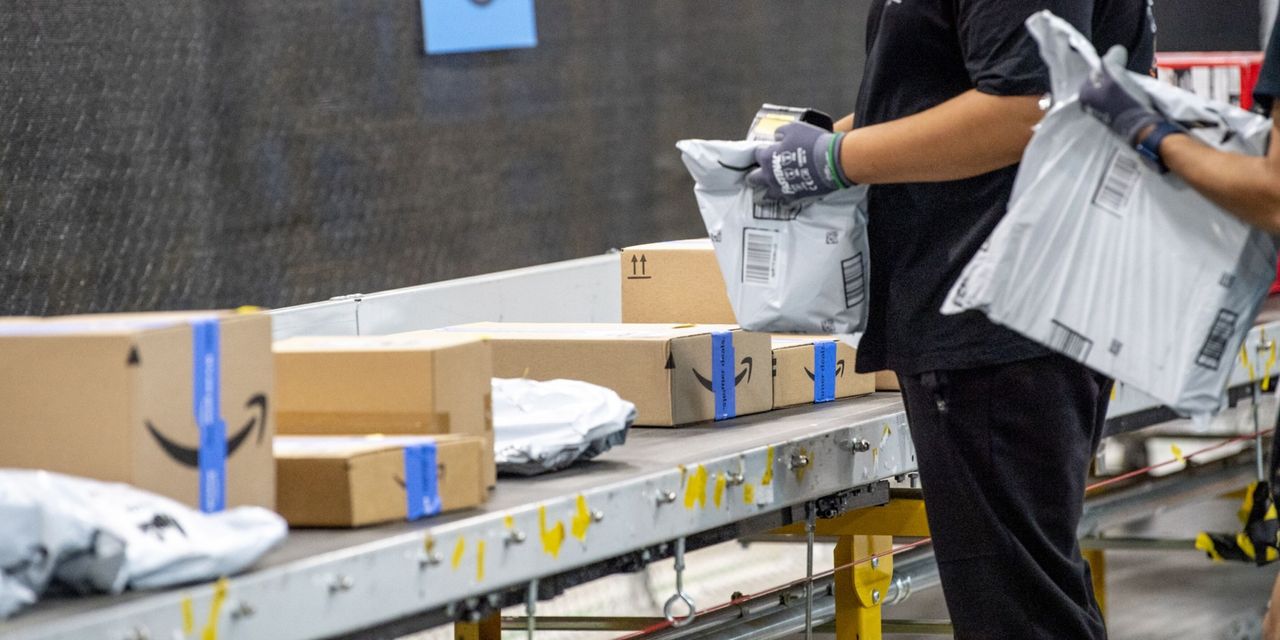Amazon.
com stock spiked after the company posted better-than-expected sales and earnings for the second quarter, along with guidance for the third quarter that topped Wall Street estimates.
Importantly, the company’s Amazon Web Services business showed better-than-expected growth in the quarter.
Amazon stock (ticker: AMZN) was up 9.6% in premarket trading Friday, particularly impressive given that shares were up nearly 60% this year heading into the earnings report. The strong results from AWS spurred rallies in other cloud-related software companies, with
Datadog
(DDOG) rallying 6.5%,
Snowflake
(SNOW) up 5.6%, and
MongoDB
(MDB) ahead 3.5%.
Growth at Amazon Web Services has been decelerating in recent quarters, as customers focused on optimization of their cloud spending, and that trend continues, but the stronger-than-expected results will boost the case that the recent slowdown in cloud demand is bottoming.
On a call with analysts, Amazon CEO Andy Jassy said that while customers continued to optimize their spending in the June quarter, the company has “started to see more customers shift their focus towards driving innovation and bringing new workloads to the cloud.” And he adds that Amazon as a result saw AWS revenue growth “stabilize” in the quarter.
“Those cost optimizations, while still going on, are moderating and maybe behind us in some of our largest customers,” he added. “And now we’re seeing more progression into new workloads, new business.”
Jassy did note that it could be some time before AI workloads add meaningfully to revenue growth. “I expect that it will be very large but it will be in the future.”
Amazon reported second-quarter revenue of $134.4 billion, up 11% from a year ago, and above both the company’s guidance range of $127 billion to $133 billion, and the Wall Street consensus of $131.2 billion. Profits were 65 cents a share, sharply above the Street’s forecast of 35 cents.
Operating income was $7.7 billion, more than double the $3.3 billion reported in the year-ago quarter, and well above the top end of the company’s guidance range of $2 billion to $5.5 billion. AWS sales were $22.1 billion, up 12%, two percentage points above Wall Street estimates.
Online store sales were $53 billion, up 4% from a year ago, falling short of the Wall Street estimate calling for 6.5% growth, but third-party services outperformed, with revenue of $32.3 billion, up 18%, and above the Street forecast for 13% growth.
Advertising revenue was $10.7 billion, up 22%, about $400 million above the consensus estimate, while subscription revenue, mostly Amazon Prime, was $9.9 billion, up 14%, and slightly ahead of estimates.
For the third quarter, Amazon sees sales of $138 billion to $143 billion, up between 9% and 13% from a year ago. At the midpoint, that’s several billion dollars above consensus of $137.5 billion. The company said the forecast includes 120 basis points of favorable impact from foreign exchange rates. The company sees operating income for the quarter of between $5.5 billon and $8.5 billion.
Jassy spoke extensively on the call about the company’s AI offerings on Amazon Web Services. He noted that the company several years ago launched a custom AI training chip called Trainium, and another for AI inference work called Inferentia. Jassy said he is “optimistic that a lot of large language model training and inference will run on AWS’ Trainium and Inferentia chips in the future.”
Amazon CFO Brian Olsavsky said on the call that the company’s capital expenditure this year would be “slightly more than $50 billion,” down from $59 billion in 2022. The company sees fulfillment and transportation capital expenditures down from a year earlier, offset by increased investment in AWS, including infrastructure to address AI projects.
“It was another strong quarter of progress for Amazon,” Jassy added in a statement. “We continued lowering our cost to serve in our fulfillment network, while also providing Prime customers with the fastest delivery speeds we’ve ever recorded.”
Amazon’s employee headcount was down 10% from a year ago, and is off 16% over the last five quarters.
Write to Eric J. Savitz at [email protected]
Read the full article here




